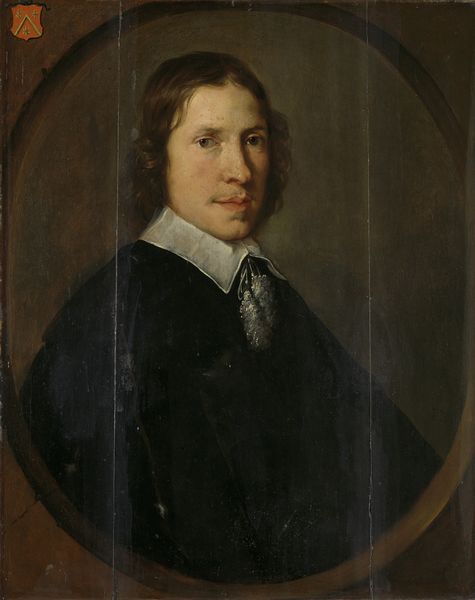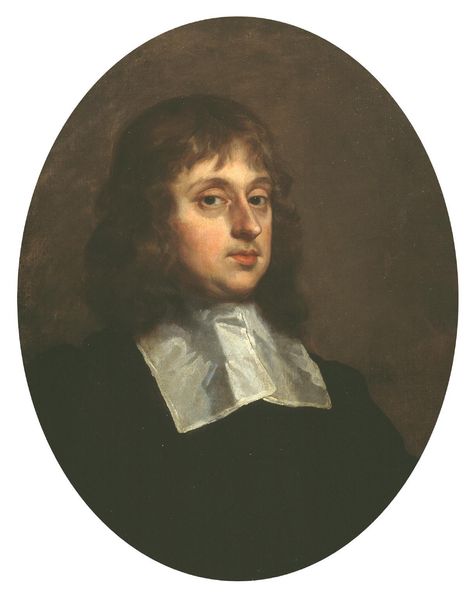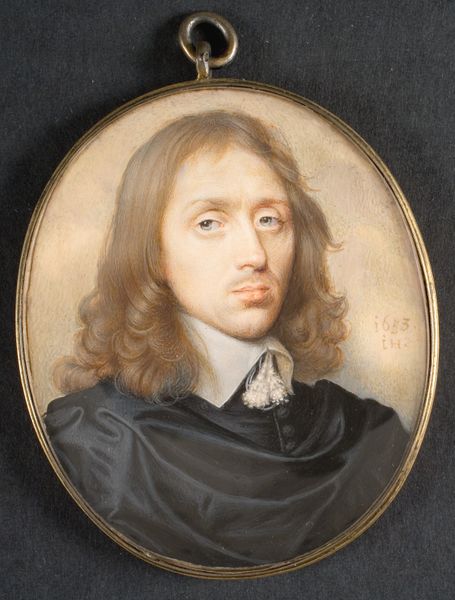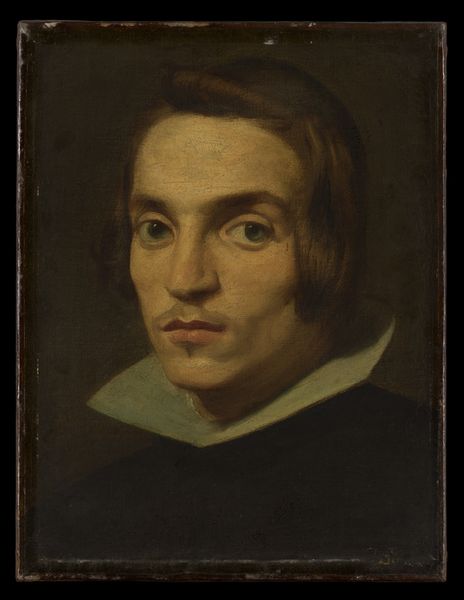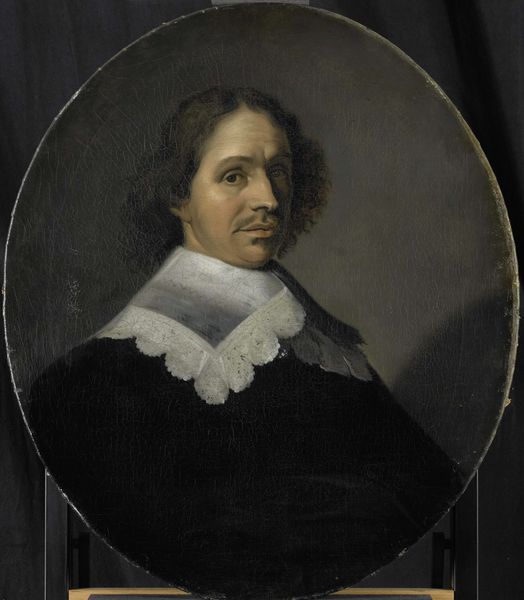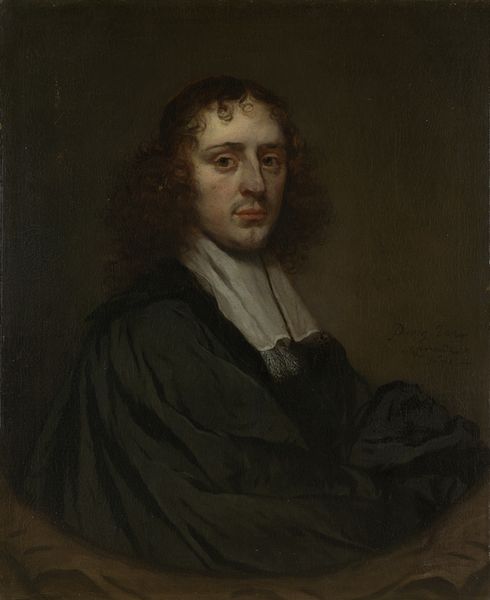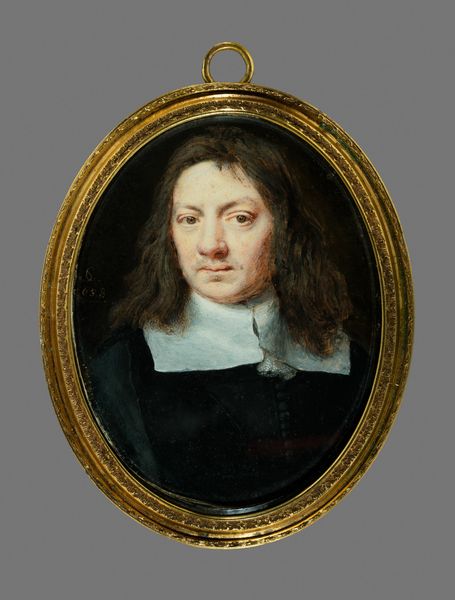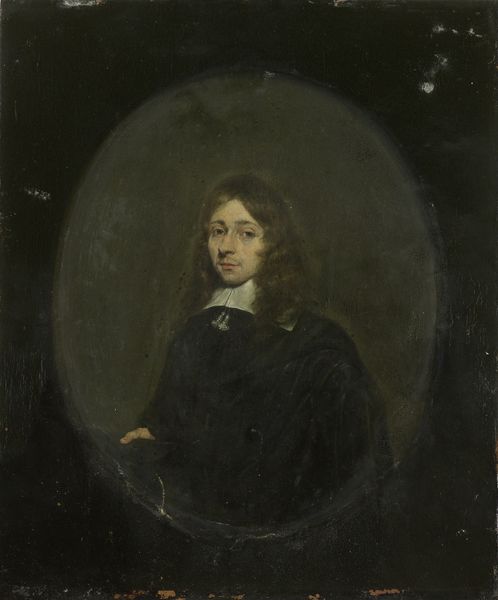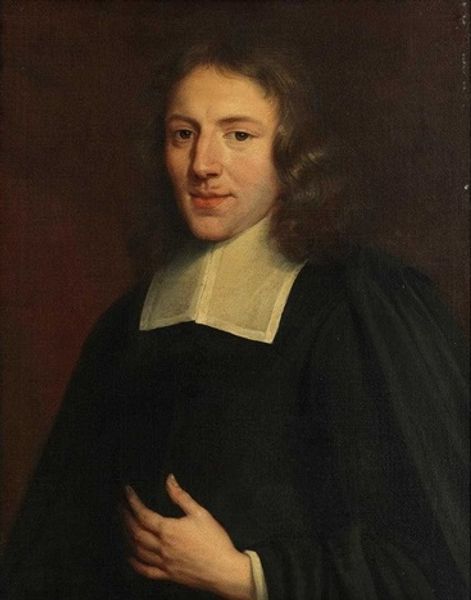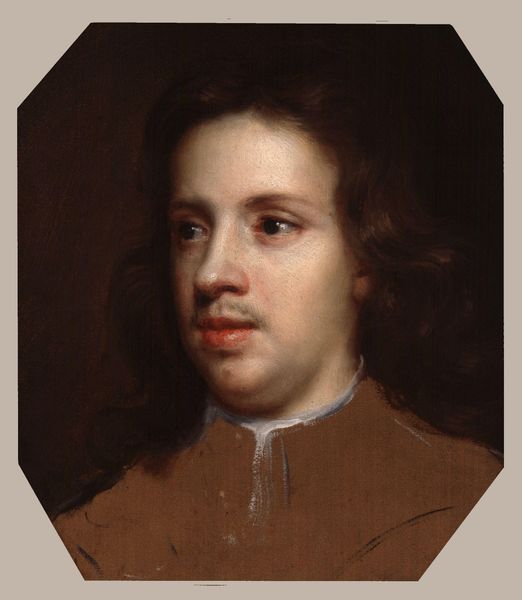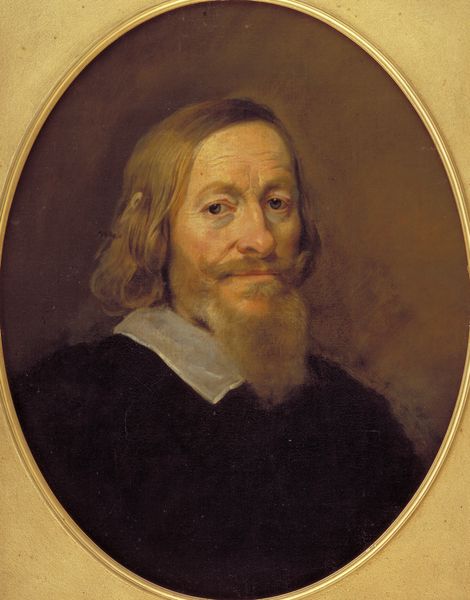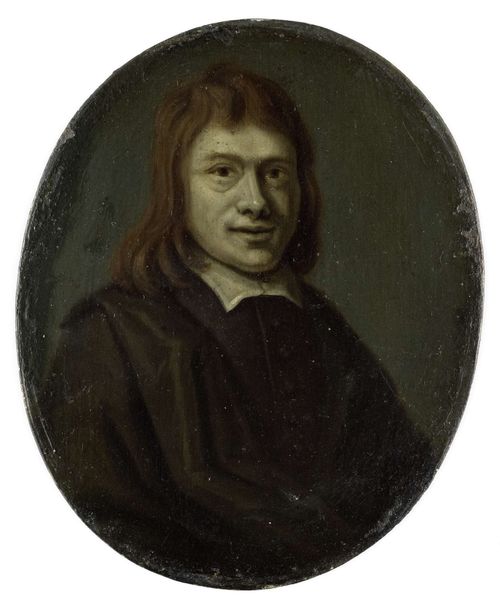
oil-paint
#
portrait
#
baroque
#
dutch-golden-age
#
oil-paint
#
history-painting
#
realism
Dimensions: height 12.5 cm, width 10.5 cm, height 18.1 cm, width 16.1 cm, depth 2.5 cm
Copyright: Rijks Museum: Open Domain
Curator: We're looking at "Portrait of a Man," rendered in oil paint by Jan van Assen in 1666. The artwork provides a wonderful case study of portraiture in the Dutch Golden Age. Editor: The darkness around him is really intense. He almost emerges out of a void, doesn’t he? And that pale ruff frames his face so distinctly. It creates a severe contrast. Curator: Precisely! This contrast is characteristic of Baroque portraiture. Look at the direct gaze, the subtle modeling of the face, those touches tell a lot. There is clearly a degree of status at play. What feelings do you have here, and how is this accomplished? Editor: He looks slightly…melancholic, I’d say. Maybe introspective. The eyes, especially, feel heavy, filled with unspoken thoughts. It feels almost too naturalistic. But the simplicity of the composition guides you into a psychological complexity, which makes this work so powerful. Curator: Portraits like this were often more than just representations, they were meant to project specific qualities of character. What qualities do you perceive? Editor: Well, he seems to be embodying a certain... quiet dignity, almost stoicism, if you will, befitting of the intellectual life of that time, I guess. What symbols do you read in the attire? Is it a deliberate presentation? Curator: Indeed, the severe simplicity would point to it being a presentation of intelligence or learning—likely for himself or family members. This stark portrait reflects a certain austere Calvinistic ethos that influenced Dutch society. Editor: So, this somber elegance isn’t just about pictorial strategy. The lack of ornamental details directs us toward interiority. Curator: Precisely. Editor: Fascinating to see how that formal restraint conveys volumes, culturally and psychologically. Curator: The piece leaves us with questions not easily answered. It suggests the enduring power of the human image to spark curiosity and reflection across the ages.
Comments
No comments
Be the first to comment and join the conversation on the ultimate creative platform.
